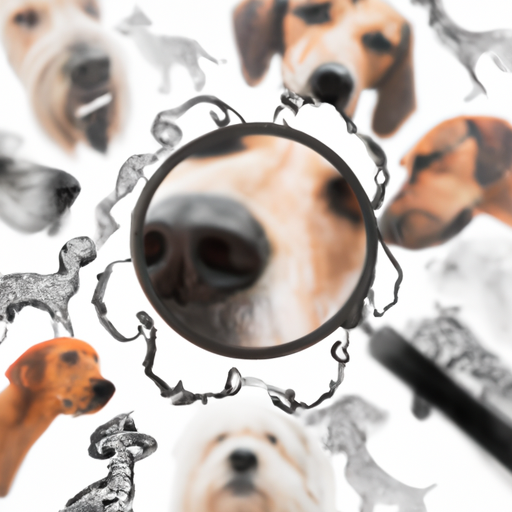As a caregiver, you’ve probably noticed how your canine companion tends to lead with their nose. But just how strong are dogs’ noses? Let’s delve into the intricate, fascinating world of the canine olfactory system.
Understanding the Canine Olfactory System
Dogs’ noses are incredibly powerful instruments. To understand just how strong they are, we need to start by understanding the canine olfactory system.
Dogs have approximately 220 million scent receptors in their noses, compared to a mere 5 million in humans. This superior number of scent receptors is what gives dogs their impressive sniffing abilities.
- Sensory Overload: Dogs are able to detect scents in parts per trillion. Imagine a teaspoon of sugar dropped into a million gallons of water – that’s the kind of sensitivity we’re talking about.
- Separate Airflow: Dogs have a separate airflow for breathing and smelling, which allows them to smell continuously, even while they’re breathing out.
- Scent Memory: Dogs can remember scents over long periods of time, a trait that is used in search and rescue operations.
- Emotion Detector: Dogs can even smell human emotions. They can detect changes in a person’s scent caused by various emotions, like fear or anxiety.
How Dogs Use Their Noses
Now that you have an idea of the power of a dog’s nose, let’s explore how they use this incredible tool.
- Finding Food: Dogs primarily use their noses to find food. They can smell food that’s far away or buried under dirt.
- Detecting Danger: Dogs can detect threats, like predators or fire, long before humans can.
- Tracking: Dogs can track scents over long distances and even across water.
- Communication: Dogs also use their noses to communicate. They can smell pheromones, which are chemicals that carry social information.
Training Your Dog to Use Their Nose
Proper training can help your dog harness the power of their nose. Here are some activities you can try:
- Hide and Seek: Hide treats around your home and let your dog find them.
- Tracking: Let your dog sniff a familiar object, then hide it and let them find it.
- Nose Work Classes: Consider enrolling your dog in a nose work class, where they can learn to identify and locate specific odors.
The Science Behind Dogs’ Incredible Sense of Smell
Scientists have been studying the canine olfactory system for decades. These are some of the most interesting findings:
| Study | Findings |
|---|---|
| Walker et al., 1997 | Dogs can detect certain types of cancer by smell. |
| Willis et al., 2004 | Trained dogs can detect changes in blood sugar levels. |
| Jezierski et al., 2015 | Dogs can detect the presence of specific bacteria in water samples. |
Frequently Asked Questions
- How much better is a dog’s sense of smell compared to a human’s?
Dogs have up to 44 times more scent cells than humans. This allows them to detect smells at concentrations nearly 100,000 times lower than humans can.
- Can dogs smell fear?
Yes, dogs can smell fear. When humans are scared, they produce adrenaline, which dogs can detect.
- Do all dogs have the same sense of smell?
No, different breeds have different numbers of scent receptors. For example, Bloodhounds have up to 300 million scent receptors, while Beagles have about 225 million.
- Can dogs smell through walls?
While dogs can’t smell through walls, they can smell things on the other side of them if the odor molecules are strong enough to seep through.
In conclusion, the power of a dog’s nose is truly remarkable. As a caregiver, understanding this can help you to better understand and care for your furry friend.



